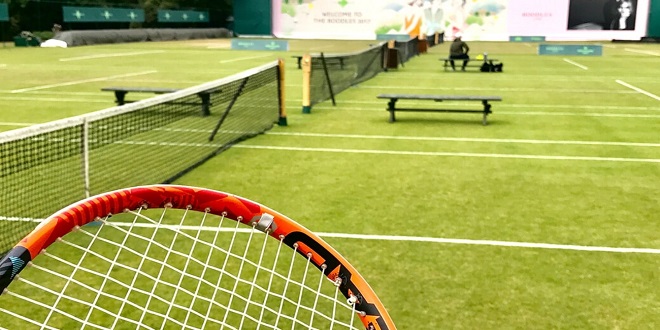The Ultimate DIY Tennis Court Guide

You might consider creating your own tennis court on your home. However, you may also be looking for ways to save money. This could be the best option if you are able to use the right tools and have the ability to see a project through to completion, regardless of its size.
There are many steps you need to take when planning large-scale construction and design projects. Failure to do so can lead to costly and catastrophic mistakes. We’ve created the ultimate DIY tennis court guide to help you get started on your project.
The Ultimate DIY Guide to Tennis Courts
Deciding on a location
The size of your tennis court is an important consideration. Although it may seem obvious, the size of tennis courts is important. Many households may have difficulty deciding where to place it. An area of 120 x 60 feet is required for a tennis court. This allows you to have enough space for both the court and the surrounding area. You won’t be comfortable serving or running off the court if you don’t have enough space.
Make sure you have enough space to accommodate a court with these dimensions on your property. Also, make sure it isn’t in the way of any property development. Although it is not necessary to think about, consider whether your court will block any views, or affect the aesthetics of the property. This could have an impact on the value of the property and your enjoyment of the home.
Sketching Up Your Plans
It is important to plan ahead for any project such as this. You should ensure that you have taken accurate measurements and given plenty of thought to your new tennis court if you are doing it alone. This plan should include all details, from material and dimensions to additional equipment and your budget.
It’s a good idea to estimate your budget for any home renovation to allow for unexpected costs and errors. You will be able to follow the plan exactly and avoid any major mistakes by defining each step.
Excavating the Area
To begin the construction of your tennis court, you will need to remove the soil layer. The sub-base layer will be added after that. The layer is typically 1 foot deep. While this may not seem like a lot, it is physically demanding to dig the entire first layer with only manual tools. It may be worthwhile to hire an excavating vehicle to speed up the process.
After you have completed the layer, you can start laying the subbase. To strengthen your court, you will fill this area with backfill or load-bearing material. If your court has a grass surface or is exposed to the elements, you will need to add drainage. This stage is often very complex so it might be worthwhile to hire an expert. If you aren’t confident with this stage, they can help.
Installing your Borders
After your sub-base has been completed, you will need to install a tennis court surround system. It doesn’t matter if you want a strong, rigid border around your tennis court, or a less expensive netting, it is important to provide some sort of safety barrier to keep the ball from getting lost.
Rogue tennis balls can cause trouble for neighbors or passersby, especially if the driver is driving near your court. Due to their slow decomposition, lost tennis balls can cause environmental damage. You can prevent lost balls from getting into the undergrowth by putting a quality border around your court.
Laying the Surface
There are many things you should consider before deciding which surface to use. Different materials will have different costs. An acrylic hard-court surface is the most affordable, while a clay surface with high quality can almost double its price. The surface can have a significant impact on play style and pace and should be considered carefully.
An acrylic surface is the best option if you are looking for an all-round choice for your tennis matches. A grass court is the best choice if you want to play traditional, powerful tennis games with fast serves and volleys. The more expensive clay courts or an artificial clay offer a more strategic and slower-paced playstyle. The clay slows down the ball as it lands, and allows for a higher bounce than any other surface, including turf.
Adding Extras
When building your court, there are some other factors to consider. A storage shed is a great option for your court, even if it’s not necessary. If left out, the cold and wet winter months can cause serious damage to your posts and nets. It is a smart decision to build a pavilion or storage shed nearby so that you can store your equipment.
Access to storage space for your court is a great way to provide your guests and you with somewhere safe to store your possessions while they play. Another great addition to any court is a practice wall. Sometimes you just want to practice your moves, but don’t have a partner with whom to do so. If a game is only for two or more people, it can be very restrictive because you have to search for a partner each time.
